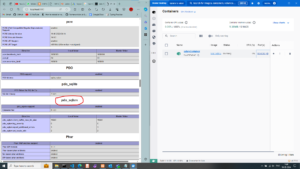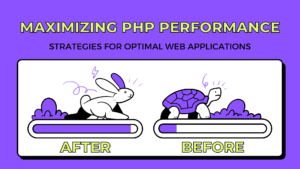When you’re building web applications with PHP, it’s crucial to ensure that your database interactions are secure. Here are some essential strategies to keep your data safe:
Use Prepared Statements and Parameterized Queries:
Instead of directly inserting user inputs into your SQL queries, use prepared statements. Prepared statements separate the SQL code from the data, making it much harder for attackers to inject malicious code into your queries. With parameterized queries, you define placeholders for your dynamic values, and the database engine knows how to handle them safely.
Example:
$stmt = $pdo->prepare('SELECT * FROM users WHERE username = ? AND password = ?');
$stmt->execute([$username, $password]);Check and Clean User Input:
Always validate and sanitize user input before using it in database queries. Validation ensures that the data matches the expected format, while sanitization removes any potentially harmful characters. PHP provides functions like filter_var() and htmlspecialchars() for this purpose.
Example:
$username = filter_var($_POST['username'], FILTER_SANITIZE_STRING);Give Minimum Access:
Follow the principle of least privilege when setting up database permissions. Only grant your database users the minimum access rights required for them to perform their tasks. Avoid using privileged accounts with broad permissions in your application code to limit the damage in case of a security breach.
Handle Errors Well:
Implement robust error handling mechanisms to deal with database-related errors gracefully. Proper error handling not only helps in debugging but also prevents potential security vulnerabilities by not revealing sensitive information in error messages. Log database errors securely to monitor and address any issues promptly.
Check Your Security Regularly:
Perform regular security audits of your application and database infrastructure to identify and fix vulnerabilities. Conduct penetration testing and code reviews to ensure compliance with security best practices. Stay updated on the latest security threats and patches to keep your system secure.
Encrypt Your Connections:
Secure your database connections by encrypting the data transmitted between your PHP application and the database server. Use SSL/TLS protocols to establish secure connections and protect against eavesdropping and data interception. Verify the authenticity of SSL certificates to prevent man-in-the-middle attacks.
Use Stored Procedures:
Stored procedures can encapsulate SQL code and be executed on the database server. By using stored procedures, you can further separate the database logic from user input, reducing the risk of SQL injection.
Example:
$stmt = $pdo->prepare('CALL GetUser(?, ?)');
$stmt->execute([$username, $password]);Implement Proper Authentication and Authorization:
Ensure that your application has robust authentication mechanisms, such as multi-factor authentication (MFA), and enforce strong password policies. Additionally, use role-based access control (RBAC) to restrict user access to specific parts of the application based on their roles and responsibilities.
Securely Store Passwords:
Never store passwords in plain text. Always use a strong hashing algorithm like bcrypt, Argon2, or PBKDF2 to hash passwords before storing them in the database. PHP’s password_hash and password_verify functions are useful for this purpose:
$hashedPassword = password_hash($password, PASSWORD_BCRYPT);Use Database Firewalls:
A database firewall can monitor and control database access based on rules you define. This adds an additional layer of security by filtering out malicious traffic before it reaches your database.
Data Encryption at Rest:
In addition to encrypting data in transit, consider encrypting sensitive data at rest. This ensures that even if the database is compromised, the data remains protected. Use database features or PHP libraries for encryption and decryption.
Regular Backups and Recovery Plan:
Implement regular database backups and ensure they are stored securely. Test your recovery plan periodically to ensure you can restore your data quickly in case of a breach or data loss.
Monitor and Log Database Activity:
Set up logging and monitoring for all database activities. Use tools to analyze logs and detect unusual patterns or unauthorized access attempts. This helps in early detection of potential security incidents.
Apply Security Patches Promptly:
Keep your database management system (DBMS) and PHP environment up to date with the latest security patches. Subscribe to security bulletins from your DBMS vendor and act swiftly when vulnerabilities are disclosed.
Implement Input Length Validation:
Limit the length of input data to what is necessary for your application. This helps to prevent buffer overflow attacks and ensures that the data fits within the expected bounds.
$username = substr($username, 0, 50);Use Content Security Policy (CSP):
While CSP mainly protects against XSS attacks, it also helps in preventing data exfiltration by controlling the sources from which resources can be loaded. This indirectly enhances database security by reducing the vectors through which an attacker can inject malicious scripts.
Educate and Train Developers:
Ensure that your development team is well-versed in secure coding practices. Regular training sessions and workshops on the latest security threats and countermeasures can significantly improve your application’s security posture.
By integrating these strategies into your PHP web application development process, you can significantly enhance the security of your database interactions and protect your data from potential threats.


